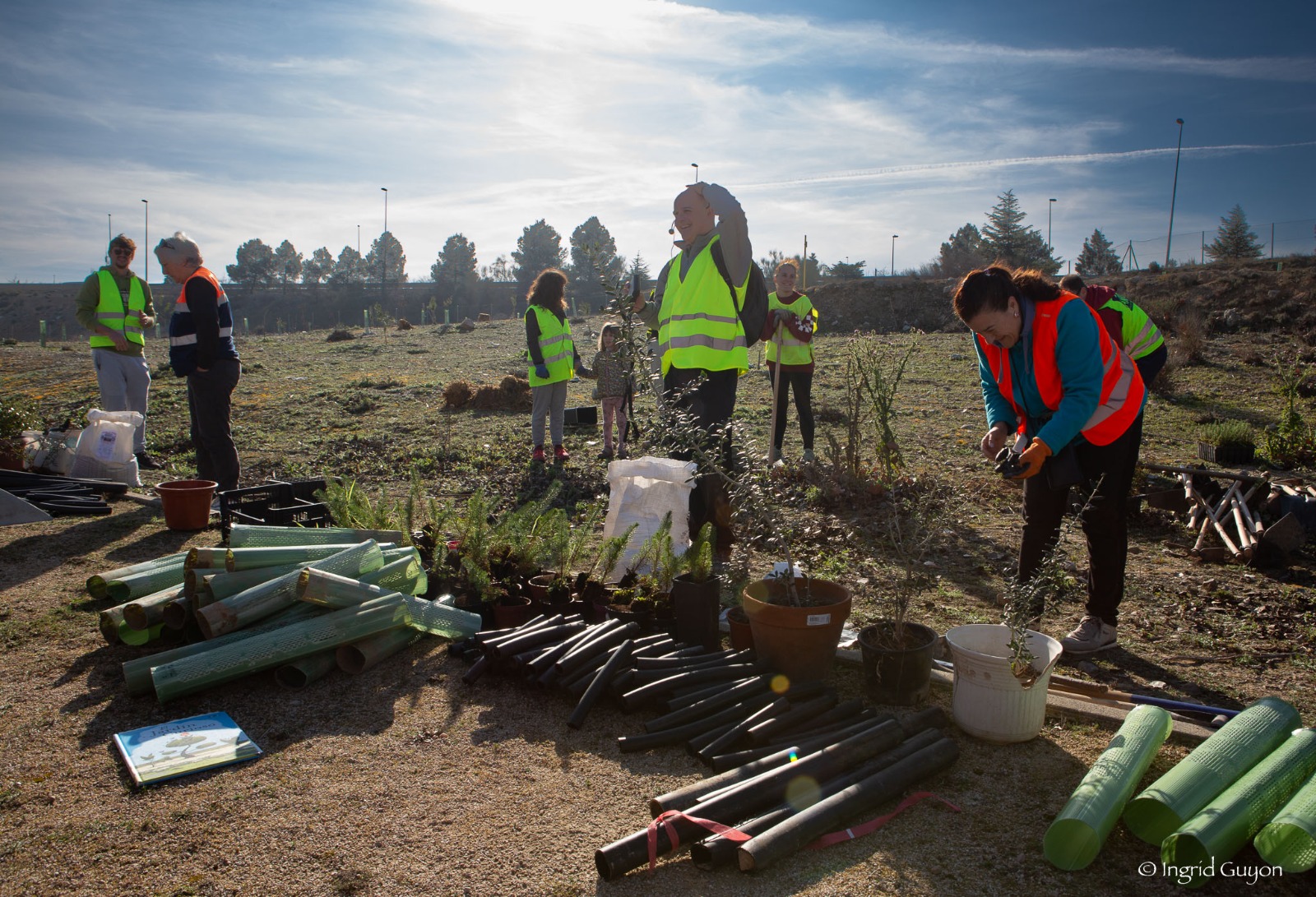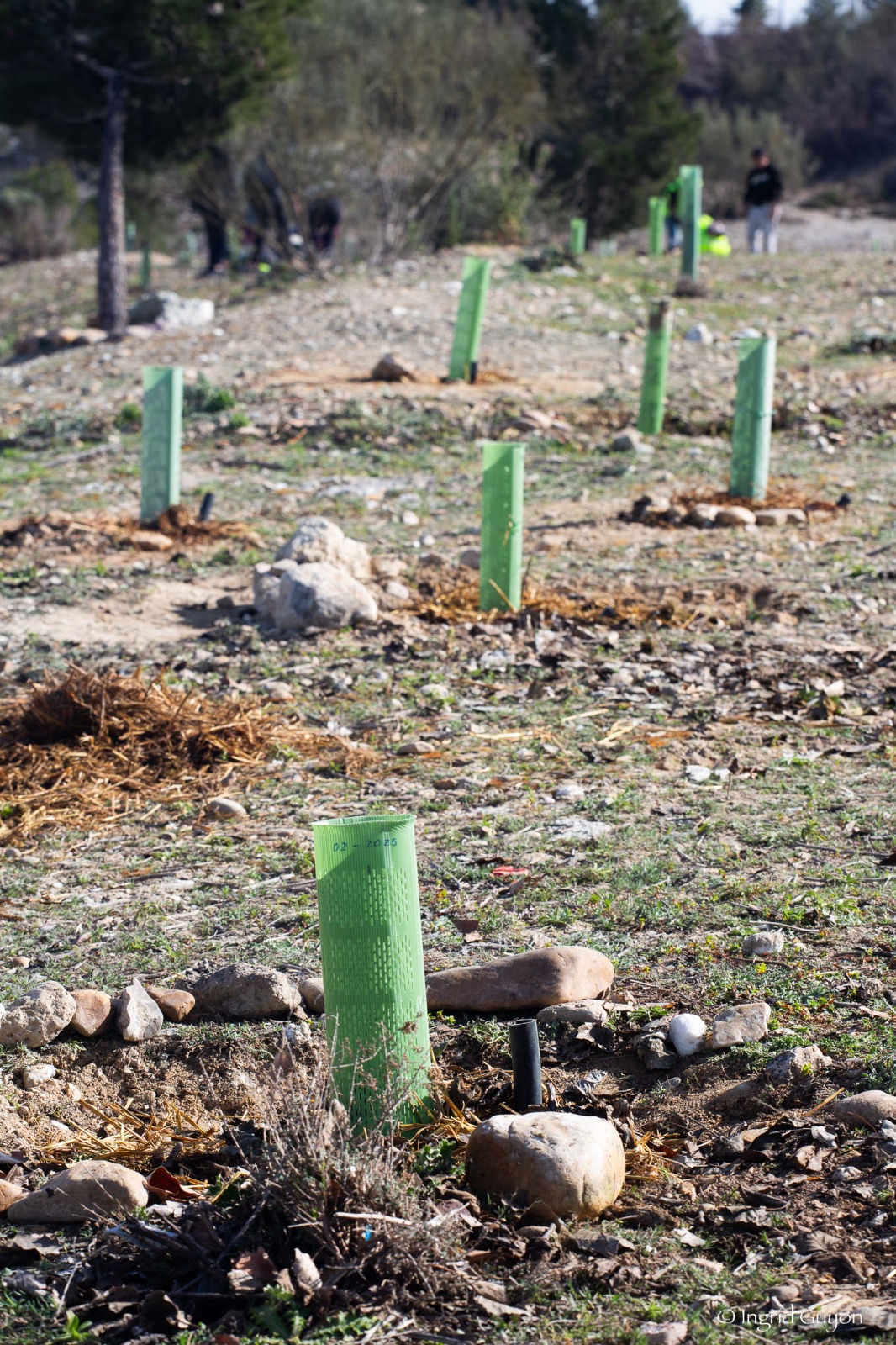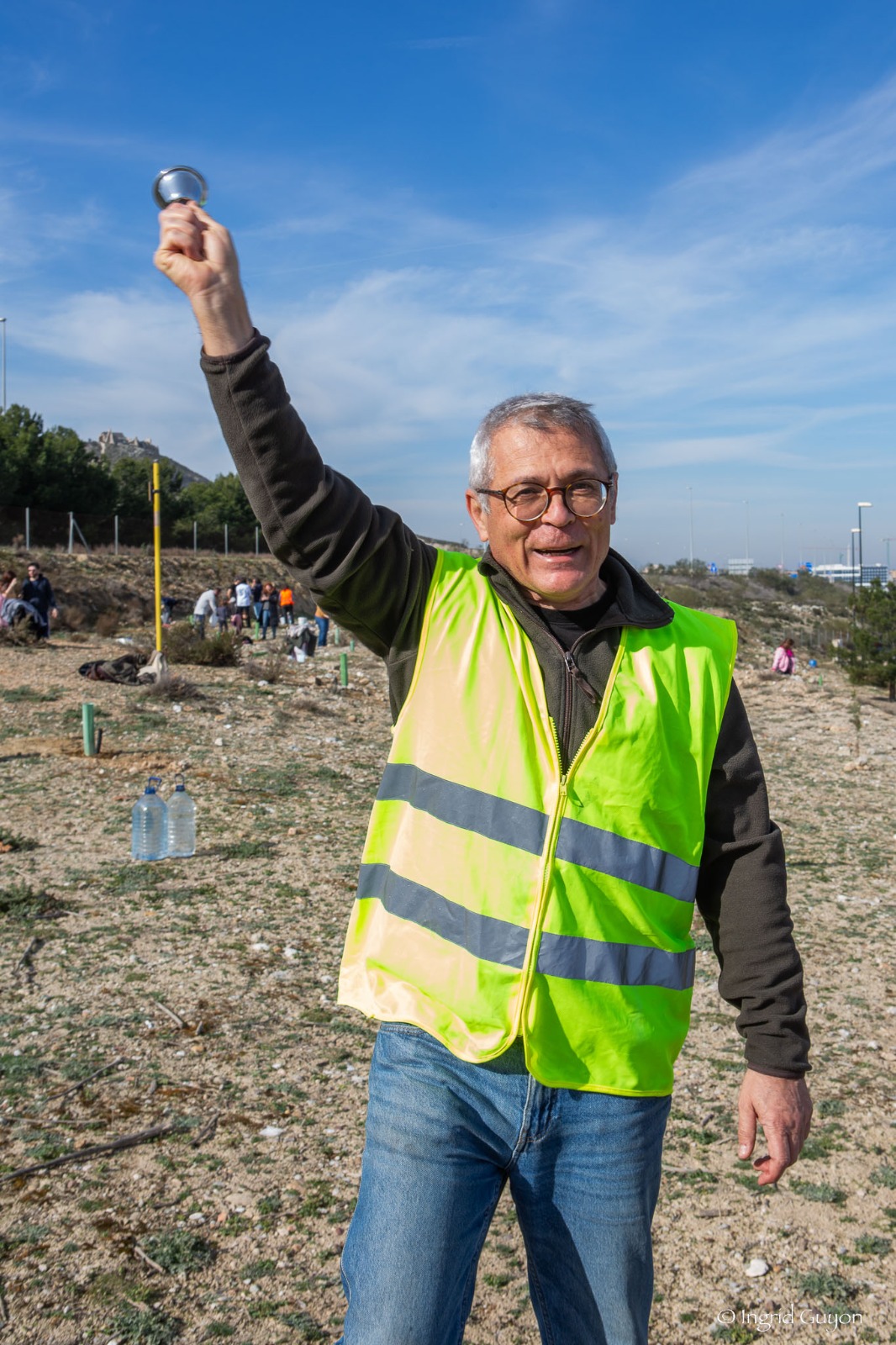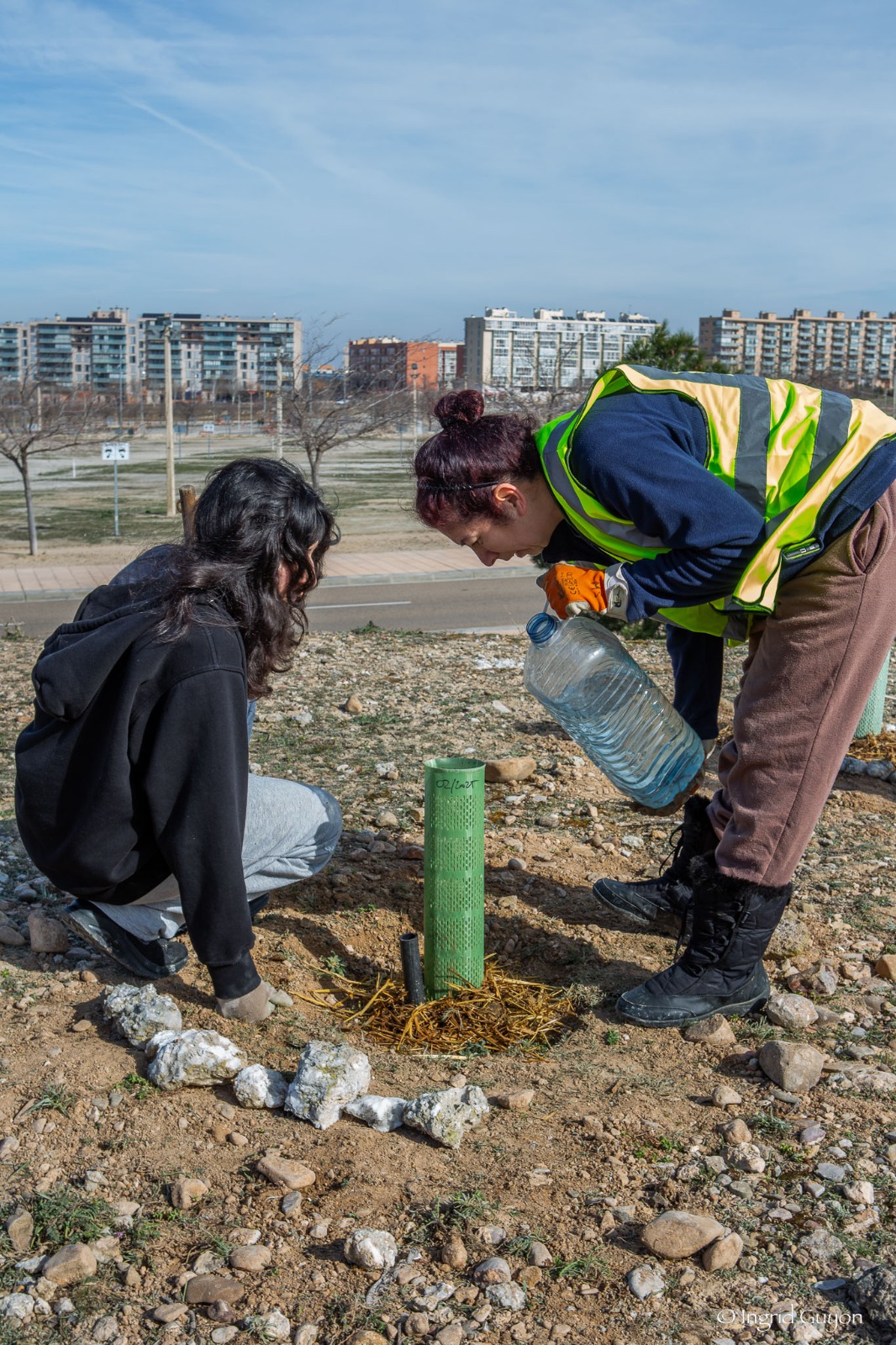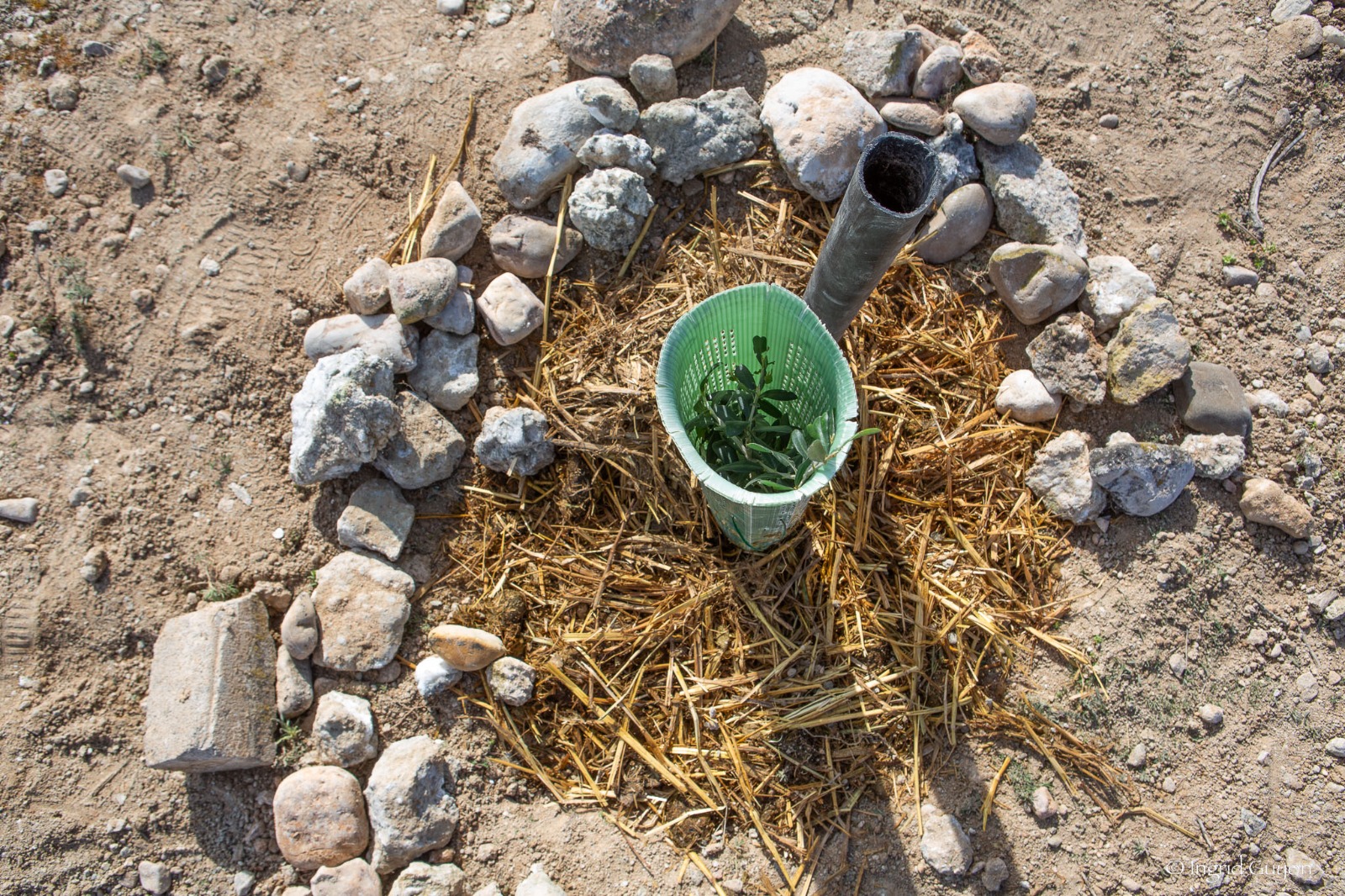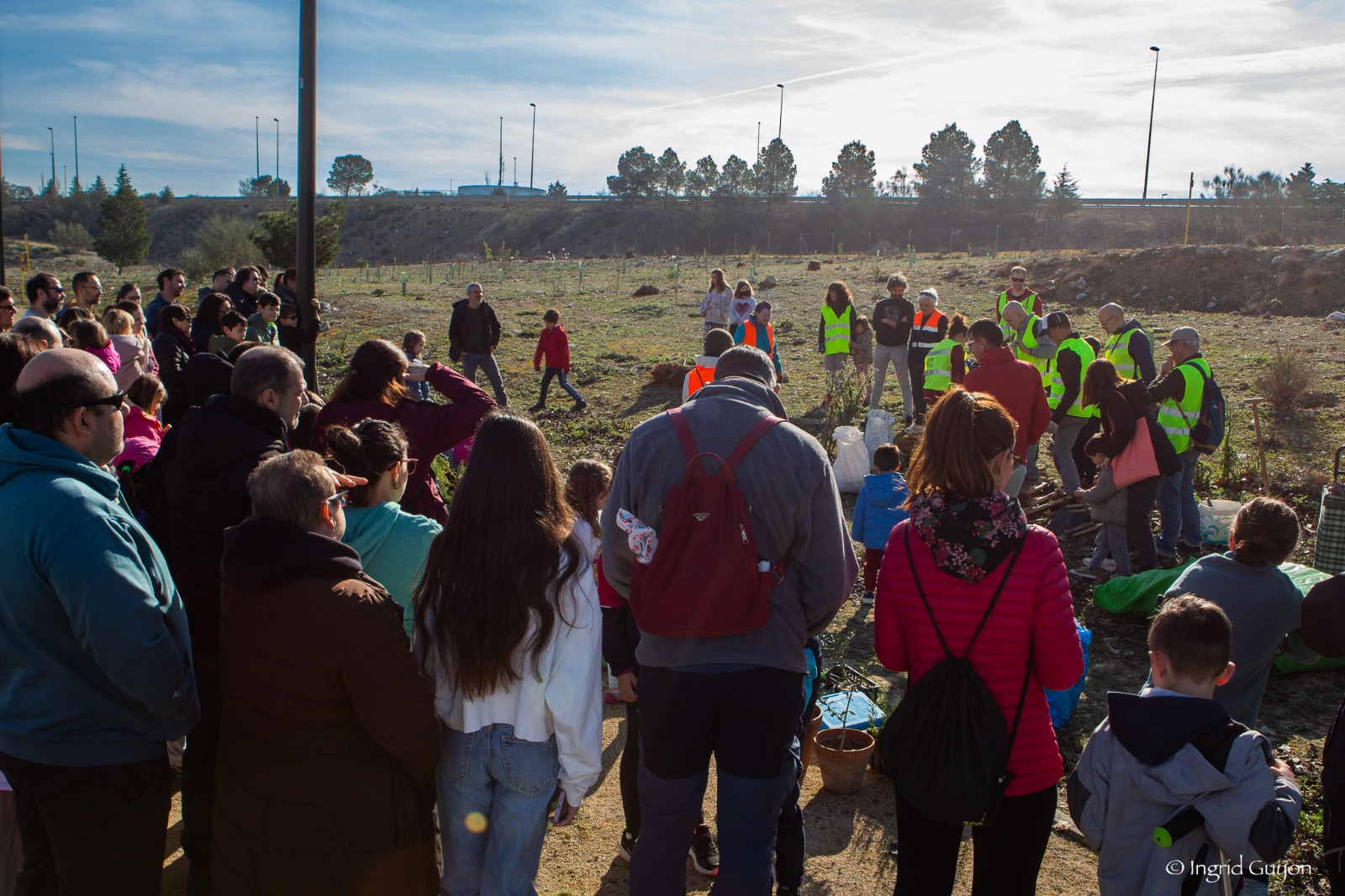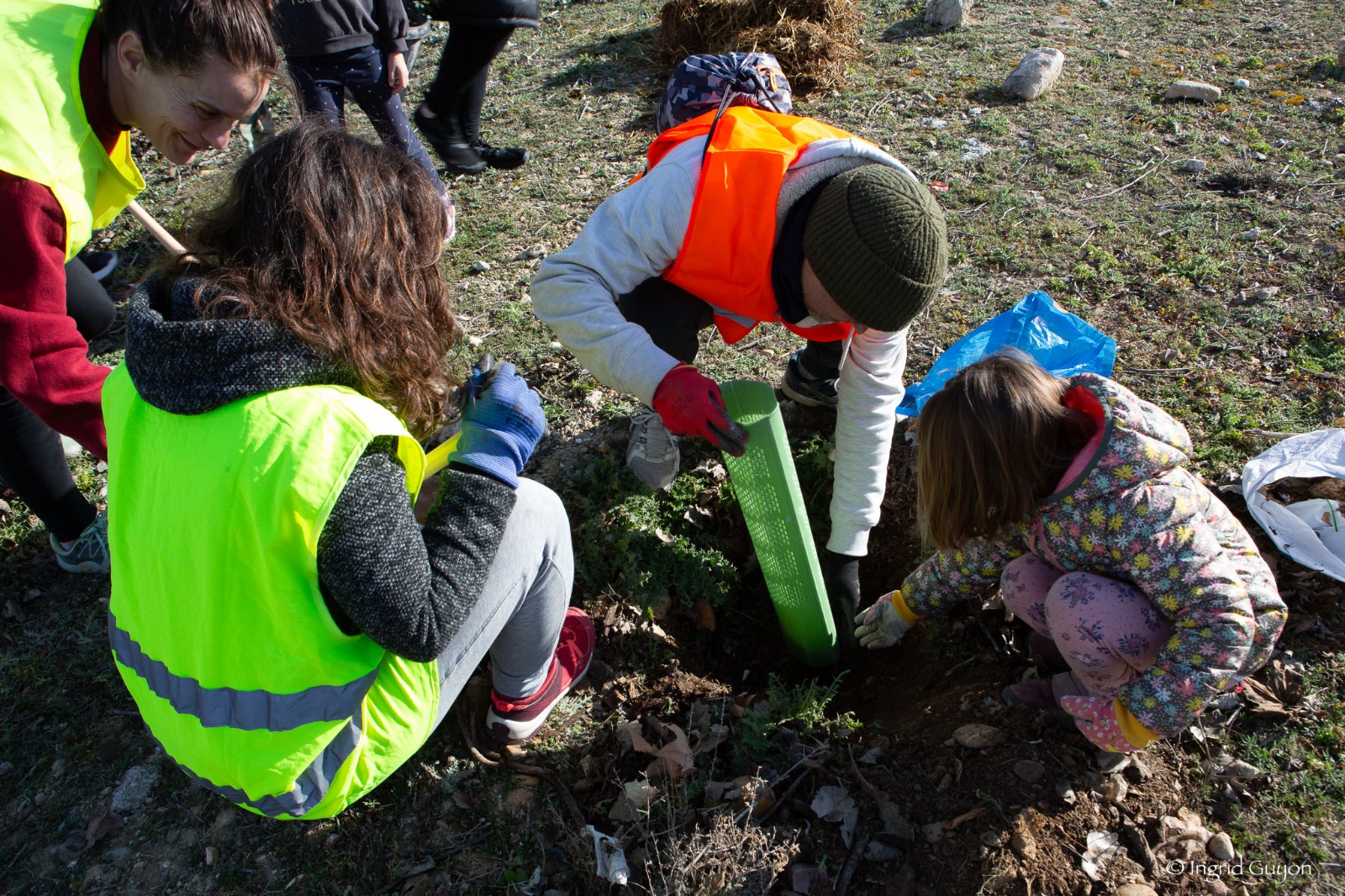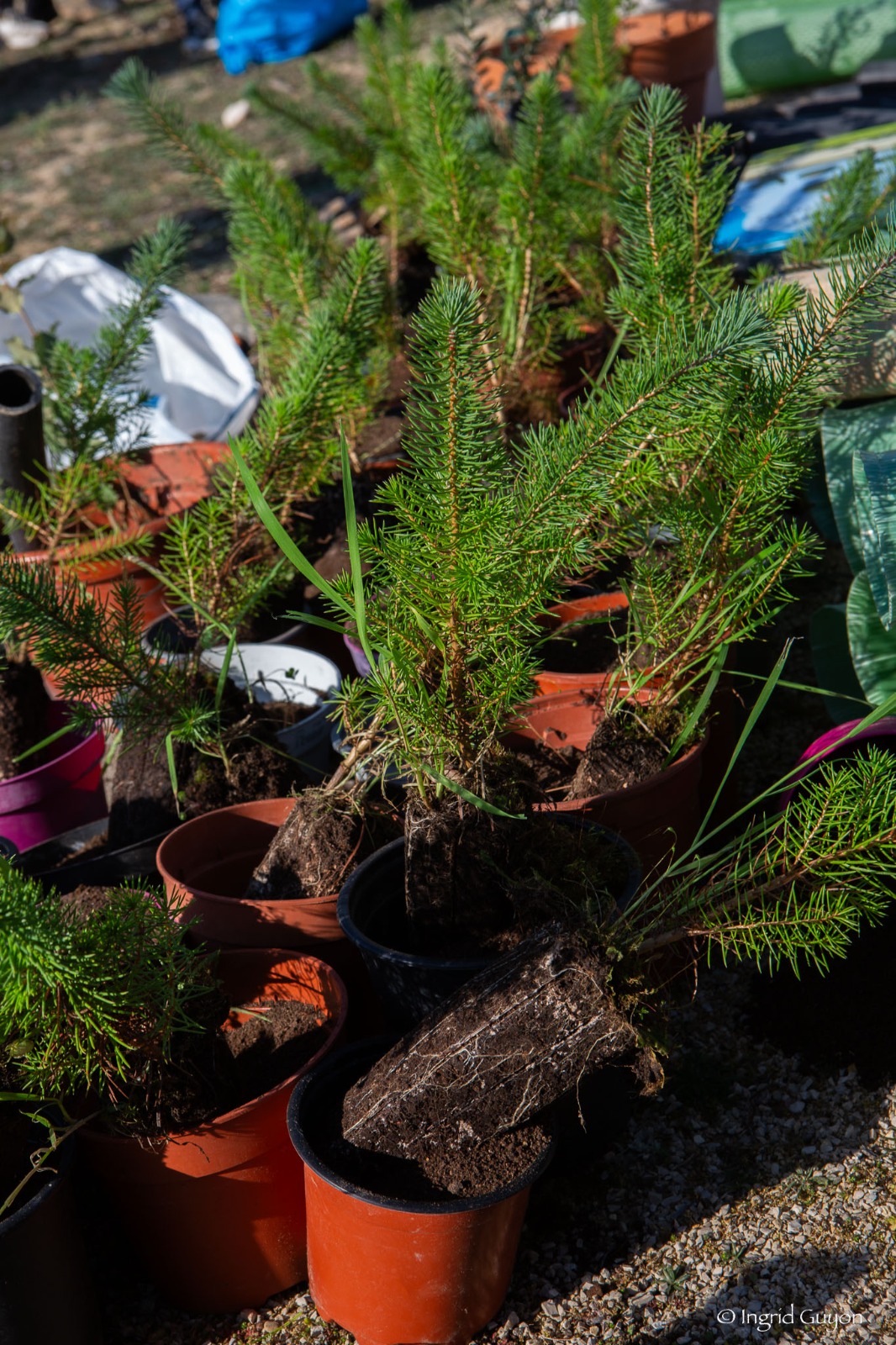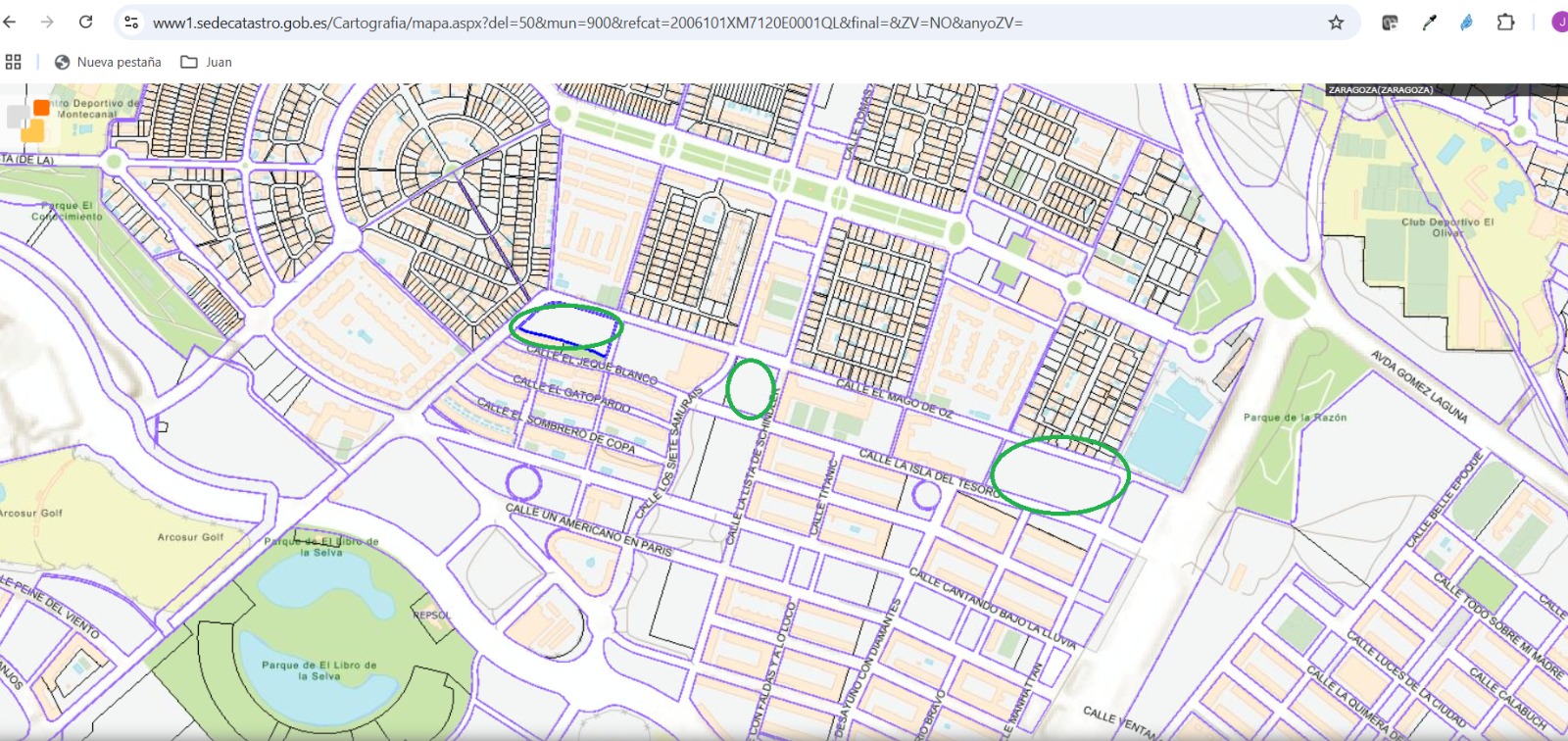Reconnecting with nature
Rewildering the south
Transformation of urban and periurban space trought civic nature restoration in the ZGZ's South
Plantando el Sur transforms our neighborhood through citizen-led urban rewilding. What started as scattered tree planting by residents concerned about urban heat has blossomed into a vibrant community movement. Today, neighbors grow saplings at home, tend community gardens, and organize cultural activities in newly greened spaces. With municipal support, we're turning gray urban voids into living ecosystems where nature and community thrive together.
Spain
Local
Zaragoza
Mainly urban
It refers to a physical transformation of the built environment (hard investment)
Yes
2025-01-31
No
No
No
As a representative of an organisation
Plantando el Sur reimagines urban nature in challenging arid conditions, transforming neglected spaces into thriving community-managed natural areas. Unlike traditional urban greening projects that aim to replicate lush forests, we embrace our local ecosystem's character, creating resilient landscapes that demand active community participation.
Our primary objective is to reconnect urban residents with nature through direct stewardship. Rather than waiting for perfect conditions, we work with our environment's limitations - intense sun, strong winds, and arid soil. This approach has turned environmental constraints into opportunities for community engagement.
The project has evolved from individual tree planting into a comprehensive nature restoration movement. Key achievements include:
-> Creating a network of drought-resistant green spaces managed by local residents
-> Building a community of 40 core volunteers and 400 active participants
-> Developing a sustainable maintenance system where neighbors water young trees and maintain natural areas
-> Establishing a social media community of 4,000 followers who engage with urban nature initiatives
-> Converting abandoned lots and informal parking areas into biodiverse spaces
Our success lies in changing the community's relationship with nature. Instead of passive observers, residents become active stewards. The need to regularly water young trees, clean areas, and protect plantings has created stronger bonds between people and their environment. This hands-on approach has fostered a deeper understanding of local ecosystems and demonstrated how even modest natural interventions can enhance urban biodiversity and community cohesion.
The project proves that reconnecting with nature doesn't require pristine wilderness - it can happen through small, persistent actions that transform both urban spaces and community attitudes toward environmental stewardship.
Our primary objective is to reconnect urban residents with nature through direct stewardship. Rather than waiting for perfect conditions, we work with our environment's limitations - intense sun, strong winds, and arid soil. This approach has turned environmental constraints into opportunities for community engagement.
The project has evolved from individual tree planting into a comprehensive nature restoration movement. Key achievements include:
-> Creating a network of drought-resistant green spaces managed by local residents
-> Building a community of 40 core volunteers and 400 active participants
-> Developing a sustainable maintenance system where neighbors water young trees and maintain natural areas
-> Establishing a social media community of 4,000 followers who engage with urban nature initiatives
-> Converting abandoned lots and informal parking areas into biodiverse spaces
Our success lies in changing the community's relationship with nature. Instead of passive observers, residents become active stewards. The need to regularly water young trees, clean areas, and protect plantings has created stronger bonds between people and their environment. This hands-on approach has fostered a deeper understanding of local ecosystems and demonstrated how even modest natural interventions can enhance urban biodiversity and community cohesion.
The project proves that reconnecting with nature doesn't require pristine wilderness - it can happen through small, persistent actions that transform both urban spaces and community attitudes toward environmental stewardship.
Restoration
Citizens
Caring
urban nature
Connecting nature
Plantando el Sur envisions urban spaces where nature thrives in unexpected places. Our sustainability mission focuses on bringing back biodiversity to our arid neighborhood through strategic community-led interventions.
Our impact extends beyond vegetation. These green spaces become living laboratories where residents discover how urban ecosystems work. Each planted tree and flowering shrub attracts insects and birds, creating small but vital wildlife corridors throughout our neighborhood. The community garden demonstrates how growing spaces can regenerate soil health while providing learning opportunities for residents.
At the core of our approach is the understanding that urban nature doesn't need to mirror forest landscapes. Instead, we embrace our local ecosystem's character, creating resilient green spaces that support native species. We plant and nurture trees suited to our climate, maintain native plants in tree pits, and scatter local seeds in urban meadows, creating a network of microhabitats that strengthen biodiversity.
We transform neglected spaces through consistent community care - from watering young trees to maintaining clean spaces. This hands-on approach creates a natural cycle: as residents tend to their environment, they witness how their actions support urban wildlife, which in turn deepens their commitment to preservation. Our growing community proves that when people have direct opportunities to nurture nature, they become invested in creating and protecting living ecosystems in their neighborhood.
Our impact extends beyond vegetation. These green spaces become living laboratories where residents discover how urban ecosystems work. Each planted tree and flowering shrub attracts insects and birds, creating small but vital wildlife corridors throughout our neighborhood. The community garden demonstrates how growing spaces can regenerate soil health while providing learning opportunities for residents.
At the core of our approach is the understanding that urban nature doesn't need to mirror forest landscapes. Instead, we embrace our local ecosystem's character, creating resilient green spaces that support native species. We plant and nurture trees suited to our climate, maintain native plants in tree pits, and scatter local seeds in urban meadows, creating a network of microhabitats that strengthen biodiversity.
We transform neglected spaces through consistent community care - from watering young trees to maintaining clean spaces. This hands-on approach creates a natural cycle: as residents tend to their environment, they witness how their actions support urban wildlife, which in turn deepens their commitment to preservation. Our growing community proves that when people have direct opportunities to nurture nature, they become invested in creating and protecting living ecosystems in their neighborhood.
Beauty in our project challenges conventional aesthetic standards. In a neighborhood where only esparto grass and alabaster naturally thrived, where harsh sunlight meets concrete, we're creating a different kind of urban aesthetic - one that emerges from the honest interaction between city infrastructure and resilient nature.
The physical transformation is subtle. Degraded spaces now host emerging vegetation - small trees and native plants breaking through concrete, creating unexpected pockets of life. We don't aim for manicured gardens but embrace the raw beauty of nature reclaiming urban space, celebrating the contrast between hard surfaces and spontaneous greenery.
Yet our project's most profound beauty lies in its human dimension. This became evident during a recent portrait exhibition where half the featured stories came from our volunteer planters. Their narratives went beyond gardening, revealing deep connections to the neighborhood's evolution. These shared stories illuminate how tending urban nature creates unexpected forms of beauty - in strengthened community bonds, in collective memories, and in growing neighborhood pride.
Our approach shows that urban aesthetics transcends visual appeal. When residents actively transform their environment, they develop a deeper appreciation for both the physical landscape and their community. Each patch of green, tended by engaged citizens, becomes a symbol of collective care and possibility, creating an authentic beauty that emerges from the relationship between people and place.
This project exemplifies how beauty can arise from embracing rather than disguising environmental challenges. By working with our area's natural character - its dryness, its limestone heritage, its demanding conditions - we're creating spaces that tell an honest story about our relationship with urban nature.
The physical transformation is subtle. Degraded spaces now host emerging vegetation - small trees and native plants breaking through concrete, creating unexpected pockets of life. We don't aim for manicured gardens but embrace the raw beauty of nature reclaiming urban space, celebrating the contrast between hard surfaces and spontaneous greenery.
Yet our project's most profound beauty lies in its human dimension. This became evident during a recent portrait exhibition where half the featured stories came from our volunteer planters. Their narratives went beyond gardening, revealing deep connections to the neighborhood's evolution. These shared stories illuminate how tending urban nature creates unexpected forms of beauty - in strengthened community bonds, in collective memories, and in growing neighborhood pride.
Our approach shows that urban aesthetics transcends visual appeal. When residents actively transform their environment, they develop a deeper appreciation for both the physical landscape and their community. Each patch of green, tended by engaged citizens, becomes a symbol of collective care and possibility, creating an authentic beauty that emerges from the relationship between people and place.
This project exemplifies how beauty can arise from embracing rather than disguising environmental challenges. By working with our area's natural character - its dryness, its limestone heritage, its demanding conditions - we're creating spaces that tell an honest story about our relationship with urban nature.
Our project builds inclusion through multiple layers of community engagement. At its foundation are open communication channels and public meetings at the neighborhood center, creating easy access points for anyone interested in participating. This openness extends to our decision-making process, where working groups collaborate to identify planting areas, select species, and coordinate with city authorities.
The initiative naturally connects different generations and community groups. Through partnerships with local schools, we've created outdoor "Forest Classrooms" that bring environmental education into public spaces. Our activities are recommended by local health centers as beneficial options for senior citizens seeking to reconnect with nature and community. These connections have grown organically, strengthening the social fabric of our neighborhood through shared environmental stewardship.
Operating without significant financial resources has led us to develop a collaborative approach based on sharing knowledge and resources. This model demonstrates how environmental initiatives can flourish while remaining accessible to everyone, regardless of their economic means. Regular cultural activities and events further strengthen these community bonds, ensuring that our green spaces become places where diverse groups meet and collaborate.
Our success in fostering inclusion comes from making urban nature a shared responsibility and benefit. Rather than creating specialized programs for different groups, we've developed a flexible framework where everyone can find their own way to contribute and connect. This approach has transformed our environmental initiative into a platform for broader social cohesion, where tending to nature becomes a bridge for building stronger community relationships.
The initiative naturally connects different generations and community groups. Through partnerships with local schools, we've created outdoor "Forest Classrooms" that bring environmental education into public spaces. Our activities are recommended by local health centers as beneficial options for senior citizens seeking to reconnect with nature and community. These connections have grown organically, strengthening the social fabric of our neighborhood through shared environmental stewardship.
Operating without significant financial resources has led us to develop a collaborative approach based on sharing knowledge and resources. This model demonstrates how environmental initiatives can flourish while remaining accessible to everyone, regardless of their economic means. Regular cultural activities and events further strengthen these community bonds, ensuring that our green spaces become places where diverse groups meet and collaborate.
Our success in fostering inclusion comes from making urban nature a shared responsibility and benefit. Rather than creating specialized programs for different groups, we've developed a flexible framework where everyone can find their own way to contribute and connect. This approach has transformed our environmental initiative into a platform for broader social cohesion, where tending to nature becomes a bridge for building stronger community relationships.
The engagement starts through multiple channels - from social media interactions to direct emails - where residents share ideas and shape our initiatives. This ongoing dialogue ensures our activities remain responsive to community needs and aspirations.
What makes our project unique is how it attracts and incorporates unexpected talents. When citizens approach us asking how they can contribute, we find ways to integrate their skills into our activities. A neighbor who offers to sing becomes part of our cultural events, transforming tree-planting days into community celebrations. This openness to diverse forms of participation has enriched our project beyond its initial environmental focus.
The impact on individual participants reveals the project's transformative power. Take Guillermo's journey: he initially joined to help build affordable urban furniture using library resources. Today, he maintains a composting system at home, has planted trees near his residence, and collects seeds for future plantings. His story exemplifies how engagement with urban nature can spark broader lifestyle changes and deeper environmental commitment.
These personal transformations ripple through the community. What began as individual actions - planting a tree, starting a compost bin, collecting seeds - have become catalysts for neighborhood-wide change. Participants don't just contribute to the project; they become advocates for urban nature, inspiring others through their example and creating a self-sustaining cycle of community engagement.
The project has evolved organically through this citizen involvement, demonstrating that when people are given meaningful ways to participate, they often exceed expectations and create unexpected positive outcomes that benefit the entire community.
What makes our project unique is how it attracts and incorporates unexpected talents. When citizens approach us asking how they can contribute, we find ways to integrate their skills into our activities. A neighbor who offers to sing becomes part of our cultural events, transforming tree-planting days into community celebrations. This openness to diverse forms of participation has enriched our project beyond its initial environmental focus.
The impact on individual participants reveals the project's transformative power. Take Guillermo's journey: he initially joined to help build affordable urban furniture using library resources. Today, he maintains a composting system at home, has planted trees near his residence, and collects seeds for future plantings. His story exemplifies how engagement with urban nature can spark broader lifestyle changes and deeper environmental commitment.
These personal transformations ripple through the community. What began as individual actions - planting a tree, starting a compost bin, collecting seeds - have become catalysts for neighborhood-wide change. Participants don't just contribute to the project; they become advocates for urban nature, inspiring others through their example and creating a self-sustaining cycle of community engagement.
The project has evolved organically through this citizen involvement, demonstrating that when people are given meaningful ways to participate, they often exceed expectations and create unexpected positive outcomes that benefit the entire community.
We work closely with the City Council's Parks and Gardens Department, who authorize our interventions. Our relationship with environmental officials has grown stronger over time, with the district councilor actively participating in planting activities. While administrative processes may move slower than we'd like, this collaboration ensures our initiatives align with municipal guidelines while pushing for more ambitious environmental action.
At the neighborhood level, we've woven ourselves into the local social fabric. Our partnerships with the library, community center, and district board create a robust network that amplifies our impact. This integration with existing community structures has been crucial for reaching diverse audiences and securing resources.
Education plays a central role in our stakeholder network. We've developed particularly strong ties with local schools - Soledad Puértolas, Valdespartera 1, and the VET Institute Virgen del Pilar. The latter's "service learning" program provides valuable plant support, demonstrating how educational partnerships can create practical benefits while offering students hands-on environmental experience.
Our approach is enriched by connections to broader environmental movements. Drawing inspiration from Madrid-based organizations, and with members involved in networks like Scientific Rebellion and Climate Alliance, we connect local action to larger climate initiatives. These relationships help us share best practices and position our local efforts within wider environmental movements.
This multi-level engagement strategy ensures our project remains grounded in local needs while benefiting from broader expertise and resources. Each stakeholder brings unique value: municipal authorities provide legitimacy and permissions, educational institutions offer resources and young energy, and environmental networks contribute expertise and wider perspective.
At the neighborhood level, we've woven ourselves into the local social fabric. Our partnerships with the library, community center, and district board create a robust network that amplifies our impact. This integration with existing community structures has been crucial for reaching diverse audiences and securing resources.
Education plays a central role in our stakeholder network. We've developed particularly strong ties with local schools - Soledad Puértolas, Valdespartera 1, and the VET Institute Virgen del Pilar. The latter's "service learning" program provides valuable plant support, demonstrating how educational partnerships can create practical benefits while offering students hands-on environmental experience.
Our approach is enriched by connections to broader environmental movements. Drawing inspiration from Madrid-based organizations, and with members involved in networks like Scientific Rebellion and Climate Alliance, we connect local action to larger climate initiatives. These relationships help us share best practices and position our local efforts within wider environmental movements.
This multi-level engagement strategy ensures our project remains grounded in local needs while benefiting from broader expertise and resources. Each stakeholder brings unique value: municipal authorities provide legitimacy and permissions, educational institutions offer resources and young energy, and environmental networks contribute expertise and wider perspective.
What makes our approach unique is how naturally different disciplines come together through informal networks - friends of friends, word of mouth, and shared community connections.
Engineers played a crucial role in the project's early stages, providing technical expertise for documentation and planning. Their knowledge continues to support our initiatives, ensuring our interventions are technically sound while remaining accessible to community members.
The project benefits from pro-bono contributions of various experts. Ecologists advise on biodiversity enhancement, arboriculturists guide our tree planting and care strategies, and environmental educators help design engaging learning experiences. Cultural animators transform our activities into community celebrations, while photographers and journalists help tell our story.
This interdisciplinary collaboration happens organically through our community networks. Rather than formal partnerships, experts participate as community members, sharing their knowledge through specific activities and informal mentoring. This approach creates a natural knowledge exchange where professional expertise enhances community action while remaining grounded in local needs and capabilities.
Our project demonstrates how community initiatives can leverage professional expertise without becoming overly technical or losing their grassroots character. The informal nature of these collaborations ensures that specialized knowledge serves rather than overshadows community engagement, creating a balanced approach where different forms of expertise complement each other.
Engineers played a crucial role in the project's early stages, providing technical expertise for documentation and planning. Their knowledge continues to support our initiatives, ensuring our interventions are technically sound while remaining accessible to community members.
The project benefits from pro-bono contributions of various experts. Ecologists advise on biodiversity enhancement, arboriculturists guide our tree planting and care strategies, and environmental educators help design engaging learning experiences. Cultural animators transform our activities into community celebrations, while photographers and journalists help tell our story.
This interdisciplinary collaboration happens organically through our community networks. Rather than formal partnerships, experts participate as community members, sharing their knowledge through specific activities and informal mentoring. This approach creates a natural knowledge exchange where professional expertise enhances community action while remaining grounded in local needs and capabilities.
Our project demonstrates how community initiatives can leverage professional expertise without becoming overly technical or losing their grassroots character. The informal nature of these collaborations ensures that specialized knowledge serves rather than overshadows community engagement, creating a balanced approach where different forms of expertise complement each other.
We plant, but we care, we water plants in summer, we visit, we keep clean, we invite people and we celebrate. That's the difference. This simple statement captures what makes our project innovative.
Unlike mainstream urban environmental projects that follow centralized planning models, our approach embeds nature restoration within daily community life. Where traditional initiatives often separate ecological goals from social activities, we integrate cultural events, educational programs, and neighborhood celebrations directly into our environmental work. This creates living spaces that are simultaneously ecological and social.
Our innovation also lies in how we handle resource constraints. Rather than waiting for institutional funding or complex infrastructure, we've developed a resource-sharing ecosystem where residents propagate plants at home, exchange materials, and collectively maintain green spaces. This distributed model of stewardship proves that effective urban rewilding doesn't always require large budgets or formal structures.
Perhaps most innovatively, we've shown how small, consistent actions by engaged citizens can reshape urban spaces more sustainably than grand, top-down interventions. Our success in transforming vacant lots into vibrant community spaces demonstrates that when people have opportunities to directly nurture nature, they become invested in its long-term preservation.
Unlike mainstream urban environmental projects that follow centralized planning models, our approach embeds nature restoration within daily community life. Where traditional initiatives often separate ecological goals from social activities, we integrate cultural events, educational programs, and neighborhood celebrations directly into our environmental work. This creates living spaces that are simultaneously ecological and social.
Our innovation also lies in how we handle resource constraints. Rather than waiting for institutional funding or complex infrastructure, we've developed a resource-sharing ecosystem where residents propagate plants at home, exchange materials, and collectively maintain green spaces. This distributed model of stewardship proves that effective urban rewilding doesn't always require large budgets or formal structures.
Perhaps most innovatively, we've shown how small, consistent actions by engaged citizens can reshape urban spaces more sustainably than grand, top-down interventions. Our success in transforming vacant lots into vibrant community spaces demonstrates that when people have opportunities to directly nurture nature, they become invested in its long-term preservation.
Our project operates without a strictly defined methodology. Instead, we work with genuine commitment and adaptability, responding to opportunities and challenges as they arise. We maintain basic organizational practices - documenting our meetings, sharing information openly, and coordinating through various communication channels - but our real strength lies in our willingness to learn and adjust as we go.
This flexible approach, while not following a formal framework, has proven effective in our context. We stay organized enough to function but remain fluid enough to incorporate new ideas and respond to community needs. When we see an opportunity for environmental improvement, we gather interested people, discuss possibilities, and take action.
Our success demonstrates that effective community environmental initiatives don't always need sophisticated methodologies. Sometimes, sincere commitment, consistent communication, and willingness to learn from experience are enough to create meaningful change.
This flexible approach, while not following a formal framework, has proven effective in our context. We stay organized enough to function but remain fluid enough to incorporate new ideas and respond to community needs. When we see an opportunity for environmental improvement, we gather interested people, discuss possibilities, and take action.
Our success demonstrates that effective community environmental initiatives don't always need sophisticated methodologies. Sometimes, sincere commitment, consistent communication, and willingness to learn from experience are enough to create meaningful change.
At its core, successful community environmental initiatives need a champion - someone who can consistently channel collective energy and maintain momentum. This role isn't about authority but about connecting people and sustaining enthusiasm over time.
Our resource mobilization strategy can be adopted by any community. It relies on transparent communication and bold asking. We've learned to share our needs widely and ask for what seems impossible - whether it's spaces, materials, or expertise. This approach often uncovers unexpected resources and supporters within the community.
The project's relationship-building model with institutions is highly transferable. It combines respectful engagement with steady persistence. We maintain constructive dialogue with authorities while consistently advocating for community needs. This balance of cooperation and gentle pressure has proven effective in gaining institutional support without compromising community goals.
Our experience shows that successful replication depends less on specific technical solutions and more on building the right social infrastructure. Communities can adapt our basic principles:
Find committed coordinators who enjoy working with people
Maintain consistent communication across all channels
Build positive relationships with authorities while staying firm on community needs
Welcome and integrate diverse forms of contribution
Celebrate small victories and maintain regular activities
Our resource mobilization strategy can be adopted by any community. It relies on transparent communication and bold asking. We've learned to share our needs widely and ask for what seems impossible - whether it's spaces, materials, or expertise. This approach often uncovers unexpected resources and supporters within the community.
The project's relationship-building model with institutions is highly transferable. It combines respectful engagement with steady persistence. We maintain constructive dialogue with authorities while consistently advocating for community needs. This balance of cooperation and gentle pressure has proven effective in gaining institutional support without compromising community goals.
Our experience shows that successful replication depends less on specific technical solutions and more on building the right social infrastructure. Communities can adapt our basic principles:
Find committed coordinators who enjoy working with people
Maintain consistent communication across all channels
Build positive relationships with authorities while staying firm on community needs
Welcome and integrate diverse forms of contribution
Celebrate small victories and maintain regular activities
Our project directly addresses some of today's most pressing urban challenges through practical, community-based solutions. By transforming vacant lots into living ecosystems, we tackle the urban heat island effect - a growing concern as cities face rising temperatures. Our approach of creating small green spaces and increasing tree cover offers a grassroots solution to climate adaptation in urban environments.
Beyond climate resilience, our work addresses biodiversity loss in cities. While individual planted areas may seem small, collectively they create corridors for urban wildlife and support native plant species. This community-led approach to urban rewilding demonstrates how citizens can actively contribute to biodiversity conservation in their immediate environment.
Our project also responds to the growing disconnect between urban residents and nature. In a world where more people live in cities than ever before, our initiative shows how communities can rebuild their relationship with nature through direct stewardship. By involving residents in planting, maintaining, and celebrating green spaces, we're developing models for sustainable urban living that reconnect people with natural cycles.
The social aspect of our project addresses another global challenge: community fragmentation in urban areas. Our collaborative approach to environmental care strengthens neighborhood bonds and creates new forms of social connection, showing how ecological restoration can simultaneously rebuild social fabric in cities.
These local solutions, while modest in scale, offer replicable models for citizen-led environmental action that addresses global challenges at the neighborhood level.
Beyond climate resilience, our work addresses biodiversity loss in cities. While individual planted areas may seem small, collectively they create corridors for urban wildlife and support native plant species. This community-led approach to urban rewilding demonstrates how citizens can actively contribute to biodiversity conservation in their immediate environment.
Our project also responds to the growing disconnect between urban residents and nature. In a world where more people live in cities than ever before, our initiative shows how communities can rebuild their relationship with nature through direct stewardship. By involving residents in planting, maintaining, and celebrating green spaces, we're developing models for sustainable urban living that reconnect people with natural cycles.
The social aspect of our project addresses another global challenge: community fragmentation in urban areas. Our collaborative approach to environmental care strengthens neighborhood bonds and creates new forms of social connection, showing how ecological restoration can simultaneously rebuild social fabric in cities.
These local solutions, while modest in scale, offer replicable models for citizen-led environmental action that addresses global challenges at the neighborhood level.
Our community has planted and nurtured more than 1,500 trees and plants, transforming barren urban spaces into living ecosystems. But beyond this remarkable environmental achievement, our project has cultivated something equally valuable: a network of human connections that grows as steadily as our gardens.
These connections often begin unexpectedly. Neighbors who first meet in WhatsApp groups coordinating planting activities now support each other in daily life. People who were once strangers collaborate to water young trees during summer heat, share gardening knowledge, and organize community celebrations. This web of mutual support has become as vital to our neighborhood as the green spaces we've created.
The project's impact is visible in changing community behaviors. More residents now walk through the neighborhood, pausing to observe growing plants and emerging wildlife. Previously neglected spaces have become gathering points where nature serves as a catalyst for social interaction. Our green areas, though modest in size, have become stages for community life.
The benefits ripple outward in multiple layers:
-> Active participants gain direct experience with urban nature and develop new environmental skills
-> Local residents enjoy improved surroundings and cooler spaces
-> Urban wildlife finds new habitats in our planted areas
-> The broader community benefits from stronger social bonds and a renewed sense of place
Each tree we plant grows alongside new relationships, creating a more vibrant and connected neighborhood.
These connections often begin unexpectedly. Neighbors who first meet in WhatsApp groups coordinating planting activities now support each other in daily life. People who were once strangers collaborate to water young trees during summer heat, share gardening knowledge, and organize community celebrations. This web of mutual support has become as vital to our neighborhood as the green spaces we've created.
The project's impact is visible in changing community behaviors. More residents now walk through the neighborhood, pausing to observe growing plants and emerging wildlife. Previously neglected spaces have become gathering points where nature serves as a catalyst for social interaction. Our green areas, though modest in size, have become stages for community life.
The benefits ripple outward in multiple layers:
-> Active participants gain direct experience with urban nature and develop new environmental skills
-> Local residents enjoy improved surroundings and cooler spaces
-> Urban wildlife finds new habitats in our planted areas
-> The broader community benefits from stronger social bonds and a renewed sense of place
Each tree we plant grows alongside new relationships, creating a more vibrant and connected neighborhood.

